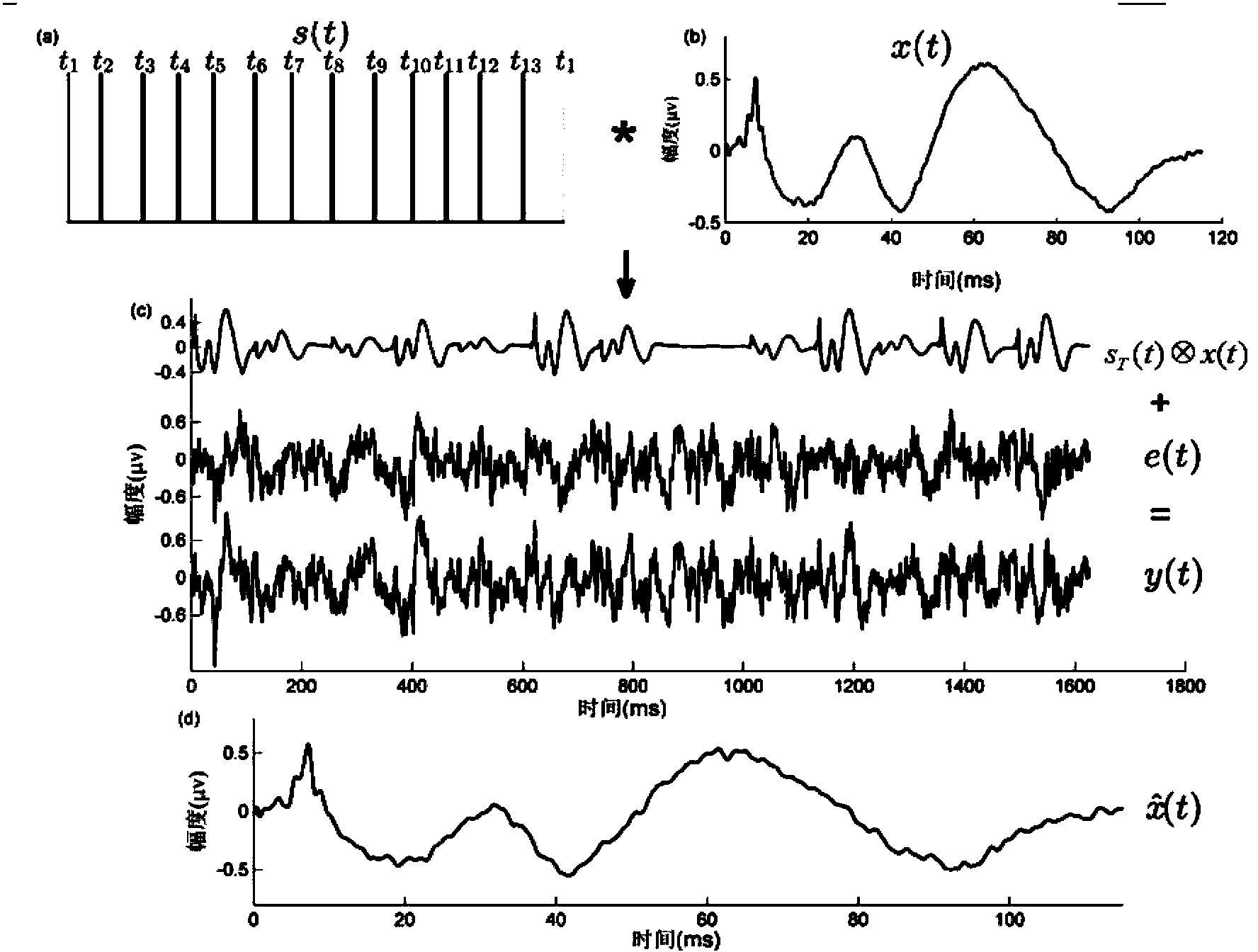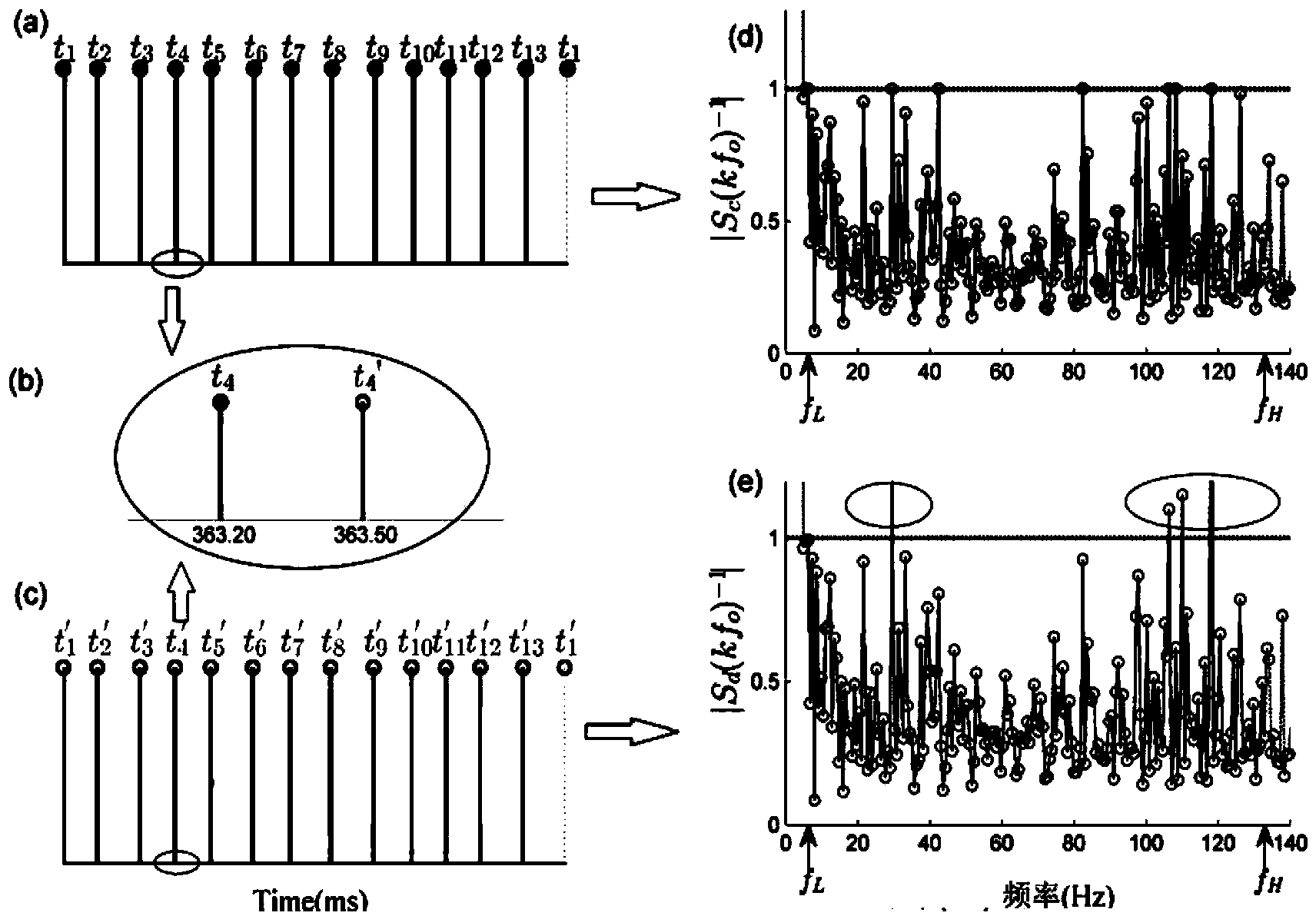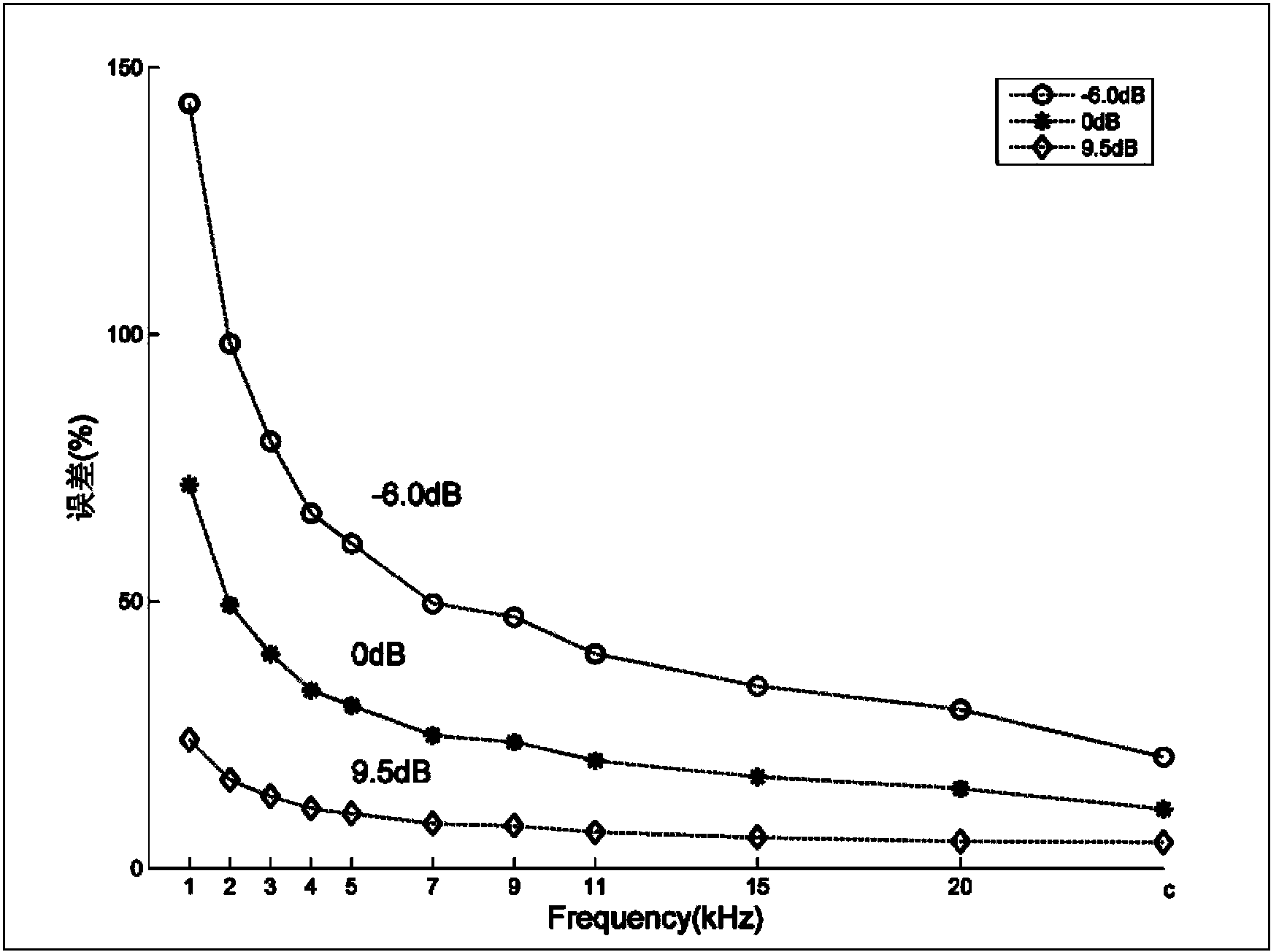Method for extracting evoked potentials under high stimulation ratio
A technology of evoked potential and stimulation sequence, which is applied in the field of biomedical signal processing, can solve problems such as the inability to achieve stable and accurate extraction and restoration of transient evoked potential, limit the clinical research and application of high stimulation rate technology, and achieve accuracy and stability Effect of extracting and restoring, reducing the impact of signal restoration
- Summary
- Abstract
- Description
- Claims
- Application Information
AI Technical Summary
Problems solved by technology
Method used
Image
Examples
Embodiment 1
[0049] Embodiment 1: how the present invention extracts transient AEP (auditory evoked potential) is illustrated in conjunction with simulation calculation
[0050] A stimulus generator capable of outputting stimulus sounds with high time precision according to a custom stimulus sequence and simultaneously recording the stimulus output time information is used. The EEG acquisition system can adopt a conventional system that meets the specifications.
[0051] (1) Electrode placement: According to the conventional AEP recording method, the recording electrode was placed at the hairline in the middle of the forehead of the subject, the reference electrode was placed at the mastoid on the same side, and the ground electrode was placed at the center of the eyebrows. The electrode impedance was less than 5KΩ.
[0052] (2) Stimulus sound output: First, the stimulus sequence meets the following conditions:
[0053] The stimulation sequence adopts a periodic pulse train signal with pe...
Embodiment 2
[0076] Embodiment 2: the effect of the present invention is illustrated by comparing with existing methods
[0077] Using an optimized sequence of stimuli obtained in a continuous time sense, such as figure 2 As shown in (a), the stimulation sequence includes 13 stimulation pulses, and the time t of the stimulation pulse appears i ={0, 110.6, 248.2, 363.2, 478.6, 614.8, 735.8, 867.1, 1006.5, 1130.1, 1240.7, 1351.3, 1490.8}ms, the length of the sequence is T=1625.8ms, the selected frequency band range [f L , f H ]The number of cases of spectrum in ]|S c (kf 0 ) -1 |such as figure 2 (d) shown.
[0078] In order to illustrate the error caused by the extraction of transient evoked potentials by discrete Fourier transform in the existing technology, we choose 10 sampling rates to convert the sequences into discrete sequences, and the specific sampling rates are {1, 2, 3, 4, 5 , 7, 9, 11, 15, 20} kHz. The discrete sequence when the sampling rate is 20kHz is as follows fi...
PUM
 Login to View More
Login to View More Abstract
Description
Claims
Application Information
 Login to View More
Login to View More - R&D
- Intellectual Property
- Life Sciences
- Materials
- Tech Scout
- Unparalleled Data Quality
- Higher Quality Content
- 60% Fewer Hallucinations
Browse by: Latest US Patents, China's latest patents, Technical Efficacy Thesaurus, Application Domain, Technology Topic, Popular Technical Reports.
© 2025 PatSnap. All rights reserved.Legal|Privacy policy|Modern Slavery Act Transparency Statement|Sitemap|About US| Contact US: help@patsnap.com



